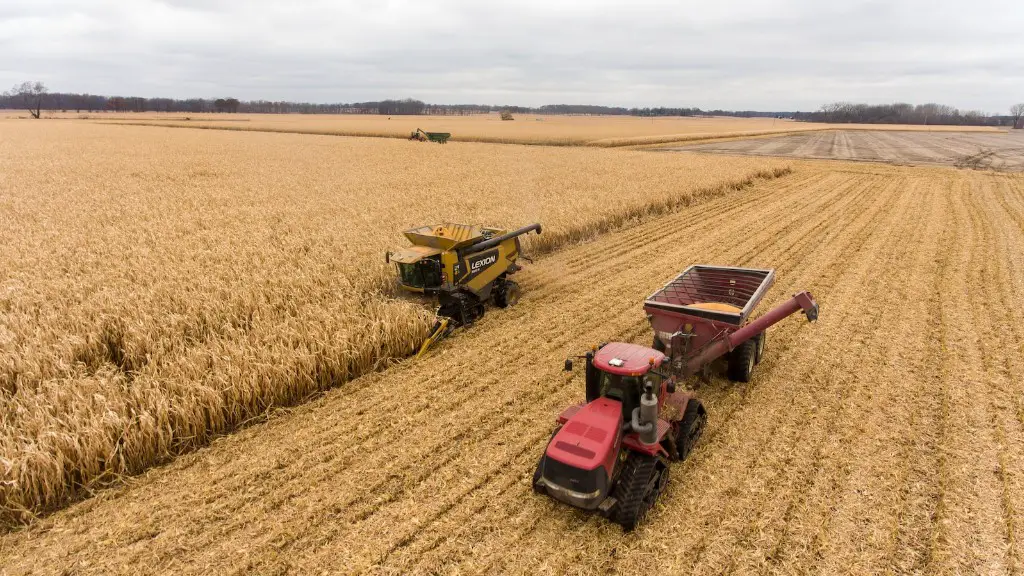Nomadic herding agriculture is a unique form of subsistence farming that is practiced by highly mobile communities of herding families. It is a response to scarce resources, unstable climates, and land that is deemed as “marginal” or otherwise unsuitable for crop cultivation. Nomadic herding communities have been critical in shaping the landscape of the Middle East, Central and Eastern Europe, and Central and Southern Asia for thousands of years. Within these regions, nomadic herding agriculture is the primary means of subsistence for many of these communities.
Nomadic herding is largely a product of cultural geography. Cultural geography is the study of social life and its variations across different landscapes. Nomadic herding was developed to answer the challenges of the environment – arid or semi-arid landscapes, which are too arid or have too few resources for crop cultivation. It is the optimal response to the environment in these areas, as it does not involve the same capital investment or risk as crop cultivation but still yields returns for families.
A typical herding group consists of several nuclear families and can range in size from 5 to 50 people. They generally breed and tend livestock such as cattle, sheep, goats, and camels. Herding families live highly mobile lives, often travelling hundreds if not thousands of kilometers in the span of a year. Their mobility is essential to their way of life as it allows them to find new pastures for their herds and find the resources needed for their families. This type of subsistence agriculture is highly seasonal and family structure, lifestyle, daily practices, and movements adapt to the ever-changing environment.
An enduring aspect of nomadic herding agriculture is the social relationships that develop within the herding community. Herders form strong kinship networks as they journey across the landscape and rely on each other for trade and mutual aid. Frontman-client relationships, whereby those with larger herds offer help to those with smaller herds, give rise to solidarity and trust.
Nomadic herding agriculture is a learned practice that has been passed down through generations. Generally, it is practiced by families, who are part of a powerful clan structure. Each family has a tradition, a geographical knowledge and an understanding of the terrain that has been developed in the area. This is why it has been resilient to external influences and has remained relatively unchanged for thousands of years.
Nomadic herding agriculture is a vital part of the landscape in the Middle East, Central and Eastern Europe, and Central and Southern Asia and yet, due to its impermanence, it is often overlooked and misunderstood. This traditional way of life is highly threatened by over-exploitation of resources and rapid urbanization, both of which disproportionately impact marginalized nomadic communities.
Impacts of Nomadic Herding Agriculture
Nomadic herding communities have been playing a significant role in the systems of land, water and energy resources throughout the Middle East, Central and Eastern Europe, and Central and Southern Asia since the dawn of time. Their dependent-to-nature way of life allows them to make the best use of limited resources and to traverse arid and semi-arid land that would otherwise be uncultivable.
The impacts of nomadic herding agriculture are numerous and diverse. Herders are stewards of the land and contribute to ecosystem stability. Through their movements in the season, herders disperse nutrients over large areas and help restore vegetation to degraded land. They are also a major contributor to distant markets, as their goods are often transported from remote areas. Through their seasonal migrations, they bring food to distant markets, which are usually inaccessible due to their distance from roads and other transportation networks. Furthermore, nomadic herders are a vital source of documentable knowledge about the land and its resources.
Beyond these direct positive contributions to ecology and commerce, nomadic herding agriculture is a critical source of food security. Globally speaking, herding families are underserved and overburdened when it comes to access to resources and services. They are among the poorest members of their societies and as a result, they bear a disproportionate impact of resource scarcity and climate change. Thus, their knowledge of the land and its resources, their deep understanding of family and community, and their adaptability are source of sustainability and resilience to these shocks.
Nomadic herding has long been central to life in many cultures throughout the Middle East, Central and Eastern Europe, and Central and Southern Asia and its impact on livelihoods is invaluable. Despite this significance, it has largely been dismissed and overlooked.
Threats to Nomadic Herding
Nomadic herding agriculture is highly threatened by numerous factors, particularly those arising from rapid urbanization and changing climate patterns. The competition for scarce resources between pastoralist livestock, crop production, and increasing human pressure from expanding urbanization leads to the overgrazing and biological impoverishment of pastoral rangelands. This, in turn, exacerbates land degradation and increases desertification processes.
Furthermore, the geographic restriction of nomadic herding communities also makes them particularly vulnerable to various external forces, such as state and corporate interventions, religious restrictions, and foreign influences that have an impact on their way of life and livelihoods.
Nomadic herding families are particularly affected by lack of access to services and resources, such as health care and education, either due to poverty or geographical barriers. This contributes to a cycle of poverty and lack of food security and can lead to the marginalization and displacement of herding families.
This situation is only further exacerbated by climate change. Climate change brings extreme weather events such as droughts, floods, and heat waves, all of which have an enormous impact on nomadic herding communities. These climate-triggered disasters have led to the displacement of thousands of herders and have also impacted their livelihoods and food security.
In addition, industrial and infrastructure projects such as dams, fences, and pipelines have been effectively obstructing the pathways of herding migrants. This has led to fragmentation of lands and disruption of the grazing cycle, causing an increase in conflicts between the nomads and farmers over the limited resources.
Advocacy for Nomadic Herding
Given the threats posed to nomadic herding agriculture, advocacy and support for these communities is of utmost importance. This can be done on both individual and policy levels. However, it is essential to acknowledge the importance of local customary laws, which are key to the maintenance of social stability and herding practice. It is also important to promote the collectivization of pastoral resources and to provide formal rights and recognition as a way of encouraging traditional land management customs.
Support for nomadic herding can also be done through the establishment of viable markets to enable pastoralists to access their rights to trade and access export markets. Furthermore, policy advocacy must take into account the unique needs of nomadic herding communities, such as access to mobility, education, and health care.
In addition, advocacy can be done by identifying and protecting cultural heritage sites and preserving pastoral knowledge. This can be done through various initiatives including community mapping, cultural heritage databases and protected areas. This is particularly important, as it can help to ensure the long-term sustainability of herding cultures.
Finally, it is important to ensure that nomadic herding communities have access to the most up-to-date and effective technologies to increase their productivity and resilience. Research and development into the latest technologies and innovations is essential, as it can help to enable more efficient management of resources, facilitate better mobility of herders, and facilitate a more resilient lifestyle.
Conclusion
Nomadic herding is an essential part of the cultural and social fabric of the Middle East, Central and Eastern Europe, and Central and Southern Asia, and yet it has been largely ignored. Those living this traditional lifestyle are extremely vulnerable to external pressures, due to the scarcity of resources and their dependency on the environment. It is incumbent upon both individuals and governments to provide the necessary advocacy and support to ensure the sustainability of this unique way of life.




